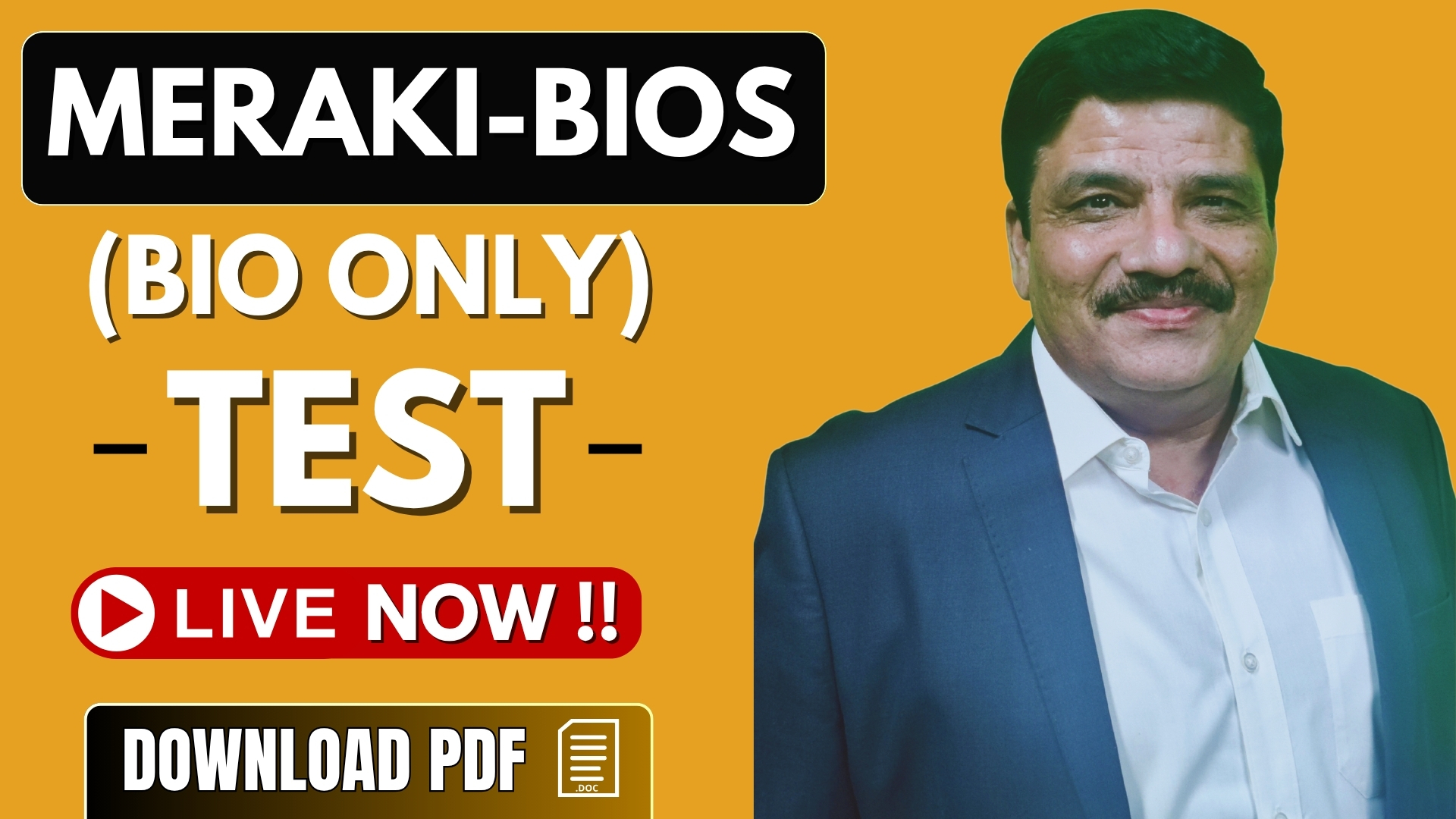Select Question Set:
Assertion (A): Physiological functions are regulated by hormones.
Reason (R): Hormones control the target tissue metabolism.
1. Both (A) and (R) are true and (R) is the correct explanation of (A).
2. Both (A) and (R) are true, but (R) is not the correct explanation of (A).
3. (A) is true, but (R) is false.
4. (A) is false, but (R) is true.
Subtopic: Mechanism of Hormone Action |
76%
Level 2: 60%+
Hints
Which gastro-intestinal hormone acts on the exocrine pancreas and stimulates the secretion of water and bicarbonate ions?
| 1. | Gastrin | 2. | Cholecystokinin |
| 3. | Gastric Inhibitory Peptide | 4. | Secretin |
Subtopic: Hormones of Heart, Kidney and Gastrointestinal Tract |
75%
Level 2: 60%+
Please attempt this question first.
Hints
Please attempt this question first.
Regulation of gene expression or chromosome function by the interaction of hormone-receptor complex with the genome is the mechanism of action of all the following hormones except:
| 1. | ACTH | 2. | Cortisol |
| 3. | Oestrogen | 4. | Thyroxin |
Subtopic: Mechanism of Hormone Action |
62%
Level 2: 60%+
Please attempt this question first.
Hints
Please attempt this question first.
An impairment affecting synthesis or release of ADH results in:
| 1. | a diminished ability of the kidney to conserve water |
| 2. | enhanced re-absorption of water by the collecting duct of the nephron |
| 3. | glycosuria and ketonuria |
| 4. | a generalised vasoconstriction in the body leading to uncontrolled hypertension |
Subtopic: Adenohypophysis & Hypothalamus |
75%
Level 2: 60%+
Please attempt this question first.
Hints
Please attempt this question first.
The functions of hormones of Fight or Flight do not include:
| 1. | pupillary dilation |
| 2. | piloerection |
| 3. | increase in the strength of heart contraction |
| 4. | storage of glucose into glycogen resulting in a decreased concentration of glucose in the blood |
Subtopic: Adrenal Medulla |
91%
Level 1: 80%+
Please attempt this question first.
Hints
Please attempt this question first.
Second messengers, employed in the action on target cells in case of some hormones, include all the following except:
1. cAMP
2. Calcium
3. IP3
4. Catabolite Activator Protein
1. cAMP
2. Calcium
3. IP3
4. Catabolite Activator Protein
Subtopic: Mechanism of Hormone Action |
86%
Level 1: 80%+
Please attempt this question first.
Hints
Please attempt this question first.
Which hormone, secreted by the small intestinal mucosa in response to fatty chyme, causes contraction of the gall bladder?
1. Secretin
2. Cholecystokinin
3. Gastric inhibitory peptide
4. Gastrin
1. Secretin
2. Cholecystokinin
3. Gastric inhibitory peptide
4. Gastrin
Subtopic: Hormones of Heart, Kidney and Gastrointestinal Tract |
84%
Level 1: 80%+
Please attempt this question first.
Hints
Please attempt this question first.
The posterior pituitary is:
| 1. | under the direct neural regulation of the hypothalamus |
| 2. | under the regulation of the chemicals produced by the hypothalamus |
| 3. | is not under any regulation of the hypothalamus |
| 4. | is regulated directly by the humoral concentrations of the hormones it secretes |
Subtopic: Prolactin & Posterior Pituitary |
88%
Level 1: 80%+
Please attempt this question first.
Hints
Please attempt this question first.
After ovulation, the ruptured follicle is converted to a structure called corpus luteum, which secretes mainly:
1. Oestrogen
2. Progesterone
3. DHEA
4. Corticosterone
1. Oestrogen
2. Progesterone
3. DHEA
4. Corticosterone
Subtopic: Misc. Hormones |
94%
Level 1: 80%+
Please attempt this question first.
Hints
Please attempt this question first.
If the adenohypophysis fails to stop producing growth hormone (GH) after body growth is completed, the person may suffer from:
1. Cretinism
2. Dwarfism
3. Acromegaly
4. Gigantism
1. Cretinism
2. Dwarfism
3. Acromegaly
4. Gigantism
Subtopic: Pituitary & Hypothalamus |
51%
Level 3: 35%-60%
Please attempt this question first.
Hints
Please attempt this question first.
Select Question Set:






